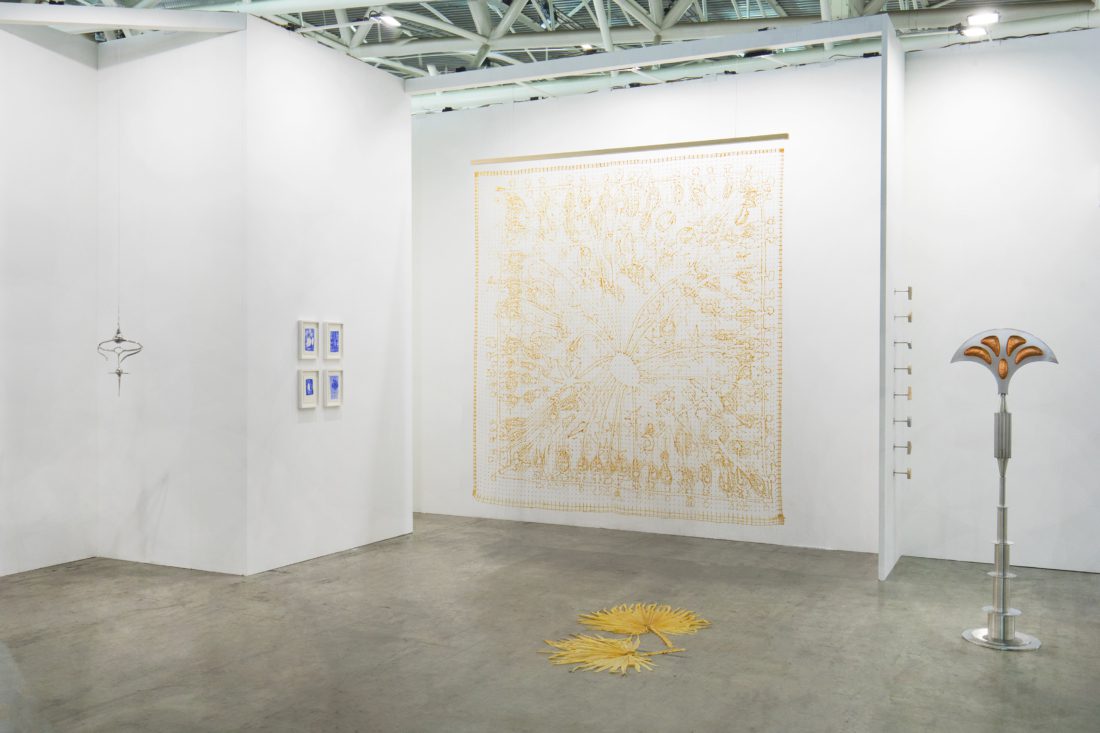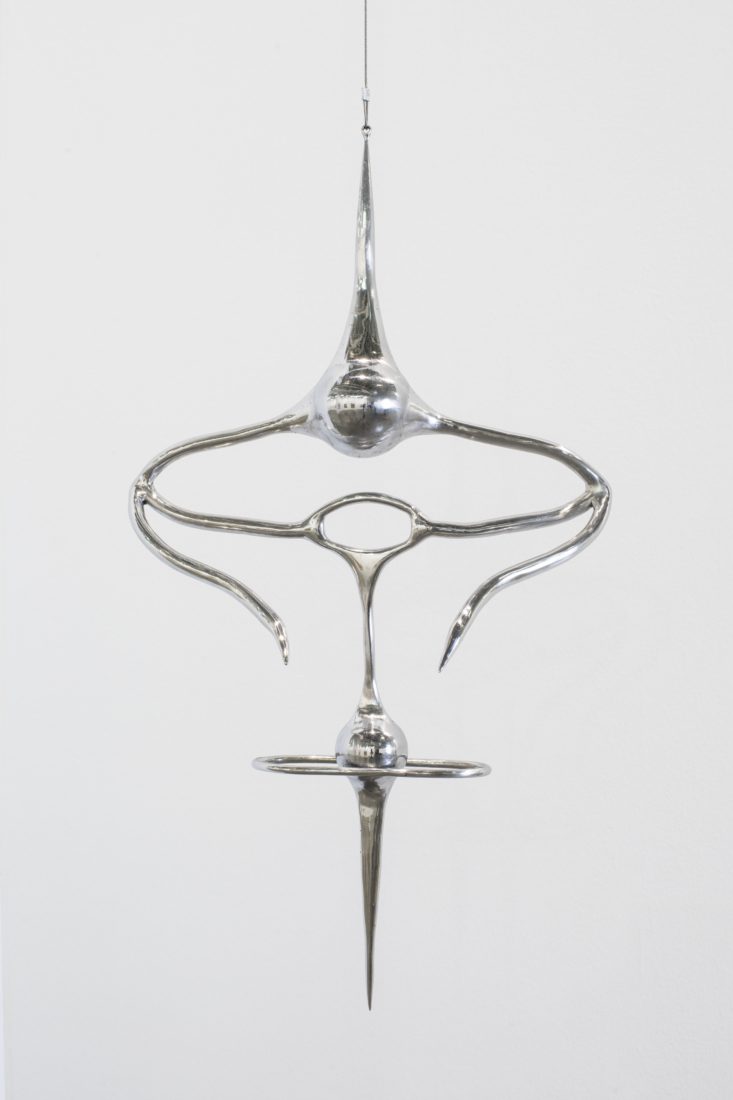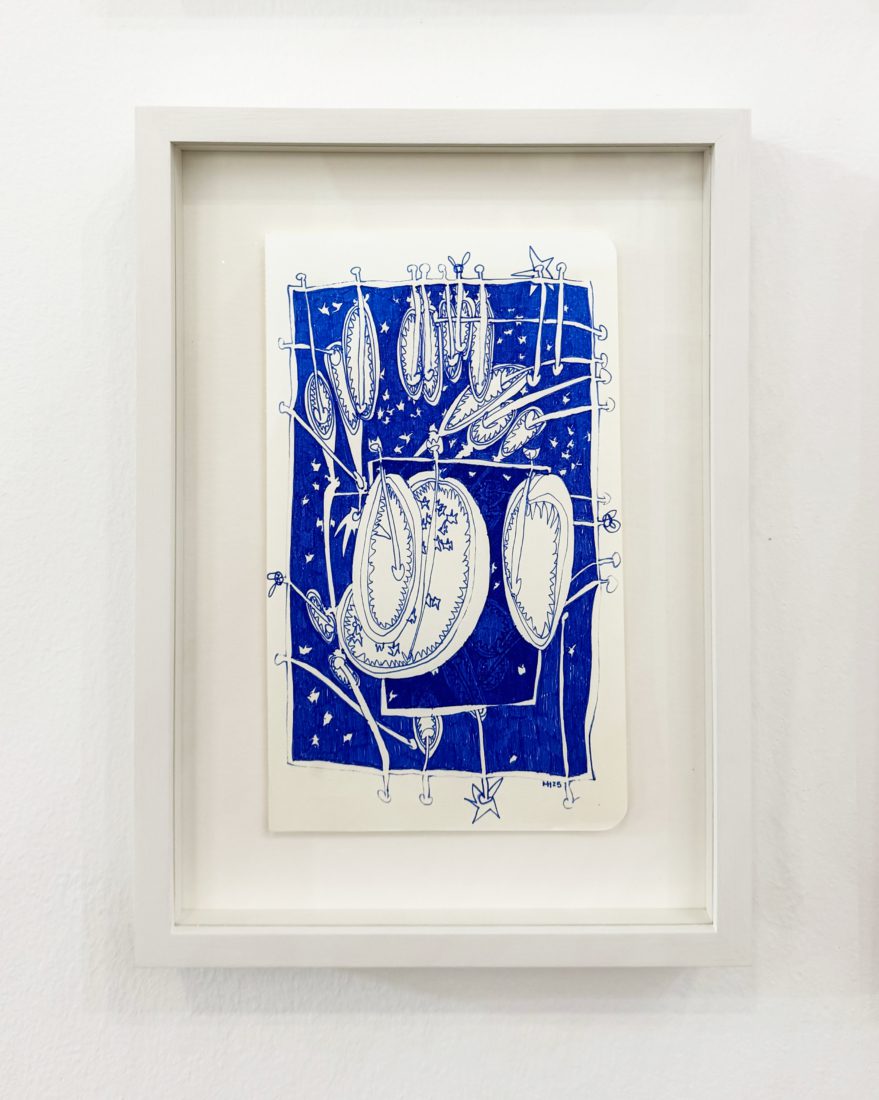Artissima 2025
Manon Harrois + Clara Imbert
[30/10/25 - 02/11/25]
For the upcoming edition of Artissima, Galeria Foco proposes a dialogue between two French artists: Clara Imbert (1994, Paris) and Manon Harrois (1988, Reims) living between Paris and Lisbon.
Clara Imbert’s practice explores the interplay between reality and illusion, space and perspective, object and observer. Drawing inspiration from physical, mathematical, and philosophical theories, she experiments with materials to give form to intangible concepts. Her works, situated between totemic artefacts and objects of curiosity, employ metals and stones to articulate a symbolic, esoteric language that evokes what she describes as “the counter- world,” a parallel dimension grounded in both the physical and the mystical.
Manon Harrois approaches her work as a series of evolving experiences rooted in interconnection between gestures, materials, and environments. The pieces she would present at Artissima, originally conceived for her solo exhibition at the gallery in November, reflect her deep engagement with nature and the rhythms of the fishermen of Cascais beach, following her residency at AiR351. Through her cross-disciplinary experimentation, Harrois gives shape to a poetic materiality that is both responsive and intuitive.
Both artists will present new sculptures developed following their respective residencies
at Fonderia Artistica Battaglia, undertaken at different times, yet both pivotal in their artistic development. These residencies mark a shared turning point, deepening their engagement with bronze and traditional casting processes, and reaffirming the role of artisanal knowledge in contemporary creation.
While distinct in language and approach, Imbert and Harrois both explore hidden or immaterial realms, be they metaphysical, ecological, or symbolic. Their practices share a sensitivity
to ancestral knowledge and rituals, which they reinterpret through contemporary lenses. In doing so, they invite us to reconsider how we shape our world and imagine its future through materials, memory, and imagination.





